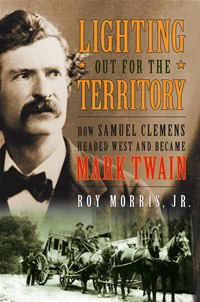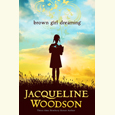Birth of a Giant
Roy Morris, Jr. tells the story of how Samuel Clemens became Mark Twain
Mark Twain. The words are simple, direct, and, thanks to their author, as full of meaning as any two-word combination in the English language. The images the words conjure are familiar the world over. The moustache and wild hair. The rumpled white suit and cigar. Above all the stories, told not in the formal, proper prose of the Victorian age, but in the real-life words of rough-and-ready rural America. Mark Twain’s influence on American culture has not been in doubt since his death a hundred years ago, and Chattanooga resident Roy Morris, Jr. does not propose any revision of that position in his new book. What Morris does in Lighting Out for the Territory: How Samuel Clemens Headed West and Became Mark Twain is explore the influence of America itself on a young man named Samuel Clemens. Morris explains how the great adventure that was the winning of the West changed Clemens, molding him into not just a teller of humorous tales but a two-word, worldwide literary phenomenon.
The origins of Samuel Clemens are well known, from his Missouri birth to his days as a riverboat pilot on the Mississippi, and Morris provides only a summary account of those times. The heart and soul of Lighting Out for the Territory, a title Morris borrowed from Twain’s most famous work, Adventures of Huckleberry Finn, is the period 1861 to 1867. During this period—which, not accidentally on his part, roughly coincided with the American Civil War—Clemens roamed around Nevada, California, and Hawaii, working and loafing in what later generations would describe as an effort to “find himself.” Whether he found himself may be debated, but in the gold fields and boom towns of the West Clemens found something perhaps more valuable: Mark Twain. As Morris states, “Neither he nor American literature would ever be the same.”
 Morris’s principal guide on this expedition into Twain’s origins are Twain’s own words. In 1872, five years after returning from his western adventure, Twain published Roughing It, a grand amalgam of autobiography and tall tales that is arguably his most famous “nonfiction” work. Always colorful and often hilarious, Roughing It is also full of what Twain himself described as “stretchers.” Morris set out, in his words, to “de-stretcher” the book—”a noble ambition but one that in Mark Twain’s case is more or less a full-time occupation.” Morris, editor of Military Heritage magazine and, like Twain, a former newspaper reporter, does an admirable job separating tale from truth and painting a portrait of both the times and the man. Lighting Out for the Territory will surely be required reading for all Twain aficionados.
Morris’s principal guide on this expedition into Twain’s origins are Twain’s own words. In 1872, five years after returning from his western adventure, Twain published Roughing It, a grand amalgam of autobiography and tall tales that is arguably his most famous “nonfiction” work. Always colorful and often hilarious, Roughing It is also full of what Twain himself described as “stretchers.” Morris set out, in his words, to “de-stretcher” the book—”a noble ambition but one that in Mark Twain’s case is more or less a full-time occupation.” Morris, editor of Military Heritage magazine and, like Twain, a former newspaper reporter, does an admirable job separating tale from truth and painting a portrait of both the times and the man. Lighting Out for the Territory will surely be required reading for all Twain aficionados.
From a cross-country stagecoach ride to accounts of miners gone wild in Virginia City, Nevada, and descriptions of high-society San Francisco, Roughing It practically defined Americans’ impressions of the Wild West. And whether enhanced by stretchers or not, Twain’s true-life adventures were often just as dangerous as those portrayed in the myth he helped create. On the day Samuel Clemens and his brother Orion arrived in Carson City, Morris notes, they “were met by a welcoming committee, a gunfight, and a windstorm. It was a normal day in the Nevada capital.” As Orion settled into his job as territorial secretary, Samuel kicked around, experimenting with mining, investing, and sundry other employment possibilities. Mining was too much physical labor for him to enjoy, and his investments went bust, so he gravitated back to a previous occupation: newspaper reporting.
The opportunity of a lifetime—though at that moment no one could have known how profound the results would be—came when the editor of the Virginia City Territorial Enterprise offered Twain a reporter’s wage of $25 a week. The Enterprise was a well-respected paper, and Clemens soon had a good reputation. But it was not a reputation for being an objective reporter of events. Reporting in those days was as much an exercise in creative writing as it was in objectivity, and Clemens’s talent lay in storytelling, whether or not the story bore any resemblance to the truth. (Today’s critics of biased reporters take note: it could be much worse.) Morris nicely sums up the situation for Twain: “Raw facts only went so far. It was up to the writer to open a shallow vein of truth, then excavate whatever nuggets of amusement lay buried below.” This was the perfect training ground for a future novelist, a man who found not only amusement but truth at the bottom of an elaborate fiction.
 The byline “Mark Twain” first appeared on February 3, 1863, in the pages of the Enterprise. But it was another February date, two years later, that directly led to the ripening of the persona attached to that byline. On the sixth of that month Twain heard a man named Ben Coon, ironically a fellow riverboat pilot, tell a story about a fifty-dollar bet on whether one frog could out-jump another. The bet was famously rigged by loading one frog with buckshot. Twain scratched the outline of the tale in his notebook. “Soon,” Morris writes, “he would make the frog’s story his own—and the world’s.” Trading on the success of what was later titled The Celebrated Jumping Frog of Calaveras County, Twain finagled a reporting excursion to Hawaii, and then took to the lecture circuit, gradually making his way back east to “civilization” and, ultimately, to the pinnacle of fame.
The byline “Mark Twain” first appeared on February 3, 1863, in the pages of the Enterprise. But it was another February date, two years later, that directly led to the ripening of the persona attached to that byline. On the sixth of that month Twain heard a man named Ben Coon, ironically a fellow riverboat pilot, tell a story about a fifty-dollar bet on whether one frog could out-jump another. The bet was famously rigged by loading one frog with buckshot. Twain scratched the outline of the tale in his notebook. “Soon,” Morris writes, “he would make the frog’s story his own—and the world’s.” Trading on the success of what was later titled The Celebrated Jumping Frog of Calaveras County, Twain finagled a reporting excursion to Hawaii, and then took to the lecture circuit, gradually making his way back east to “civilization” and, ultimately, to the pinnacle of fame.
Samuel Clemens had found his career, a livelihood for which he was uniquely qualified. When, as Mark Twain, he stepped onto the stage or into the pages of a book, he was expressing a perfect confluence of inclination and experience. As Morris notes in this fine biography of the birth of a literary giant, “One way or another, he had been talking all his life—in fact, it was usually hard to shut him up.” For the rest of his life, Mark Twain never did shut up. He just kept giving the world some of the greatest stories ever told.
Roy Morris will appear at Davis-Kidd Booksellers in Nashville on April 8 at 7 p.m.


